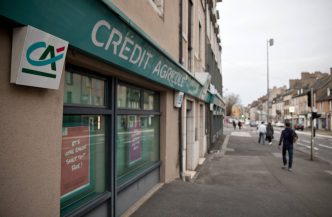How data analysis can help to improve access to finance for small businesses… but only with support of banks.
Kent Hudson from LABO ESS writes about a pilot scheme in France to use effective data management and partnership working to improve access to finance for small businesses
From 2013 to 2017 the French social economy think-tank Labo ESS led a bank/non-profit partnership to increase successful lending to new small businesses in the Franche-Comté region of eastern France. The partnership increased Crédit Agricole Group’s locally-managed retail bank’s small business lending by 20%, cut the default rate on loans to new businesses by more than half and substantially lowered the cost-per-loan for the bank and its partners.[1] The partners were four government-financed non-profits that provide services and partial funding to new businesses: with decades of small business experience and offices throughout France, they have become de facto third parties in small business loan underwriting for many French banks.
But entrepreneurs first turn to banks, not to non-profits. Seeking both counsel and finance, they may find neither. They often seek a loan too early on, before the project can be easily evaluated by ‘boiler plate’ underwriting criteria used by harried bank staff. They may simply be turned away at that point. When staff do begin the underwriting process, they collect significant information on the client and the project on bank underwriting software. But if no loan offer can then be made, this information is discarded. Thus no record at all is kept of unsuccessful loan requests.
- Our preliminary enquiry 2013 first demonstrated that some 30% of drop-in new business loan requests thus went unanswered – and unrecorded.
- We then compared new small business loan loss rates between the bank and its third-party non-profit lender and guarantor partners. Without non-profit input Crédit Agricole new small business loans averaged a 10% loss rate. The rate was 3% for the non-profit partners in the same period, and this with loans almost entirely made to entrepreneurs who had previously been refused a loan by one or more banks.
With no record of loan requests denied, no systematic follow up is possible. More importantly, with no data on denied requests, managers can not assess internal processes and standards applied to the loans not made. This striking loss of information appears to be standard practice, as reporting on unmet loan requests is not required of banks by European (or British) regulators.[2] If this is indeed the case, then national data on the numbers and types of small business loan requests may be in error by up to 30%. This represents a huge negative for entrepreneurs and no doubt continues to have a harmful effect on the economy. For the local bank however this amounts to fewer than one thousand new small business loan requests denied per year by Crédit Agricole in Franche-Comté – an average of less than 10 per year at the branch level.

A preliminary study was completed in early 2014. Our findings convinced local bank managers to agree to put a critical analysis of its own internal procedures at the center of a partnership to optimize service to this complex market. The bank would modify its software to collect and analyze all new small business loan request data, and share it with the partners.
It is important to note here that Crédit Agricole managers could make this decision locally. They did not need to request modifications to central back-office systems and procedures. This was because the local bank was still using its own proprietary underwriting software.
Two test zones of over 100,000 inhabitants each were selected surrounding the cities of Belfort and Besançon. In these areas bank branches’ small business lending is coordinated through 2 small business ‘Pro’ centers. All loan requests, whether accepted or refused at any stage, were to be tracked by the new software. Reasons for refusal were noted and ‘unready’ entrepreneurs were referred to one of the non-profits for assistance. The information while not geo-spatial, is correlated to branch areas that roughly correspond to zip codes. Thus if a loan request cannot immediately be approved, the software records the bank branch, and partial demographics for the borrower and the neighborhood.
Over time this information enables both partners to identify specific process errors that result in delays, costly for the client and the partners. The bank can also track agent time (cost) per loan request. In addition, the bank can evaluate the quality of the non-profit’s services (number of referral returns, of loans accepted and defaults for each non-profit) and can compare the quality (late payments and defaults) of loans underwritten with and without non-profit services.
This information is shared among the partners in quarterly review and problem-solving meetings (2014 – 2016), with the goal of facilitating systematic cooperation throughout the region. In mid-2015, with revision of the bank’s local IS systems fully operational, the program was gradually extended to the entire region of Franche-Comté.
Over this period lending officers were given increased authority to lend. Projects with non-profit support were given automatic approval. As noted above, the project fully met the bank’s goal of increasing market share in lending to new small businesses, while reducing underwriting cost and loan risk. The non-profits increased their client base while reducing costs of service. But the biggest potential win for the non-profits was demonstrating to the bank the economic value of their services. This strengthens their case for bank funding, alongside public funds.

However in spite of this significant success, Crédit Agricole ended the project in 2017. The reason for this failure is the rigidity of centralized bank IT systems and processes, and the cost of changing them.
In 2016, Crédit Agricole announced new, uniform national underwriting software to be implemented throughout the Group in late 2017. The software applied prior small business processes and did not require tracking of unsuccessful loan requests. The Direction of the local bank in Franche-Compté then tried and failed to persuade the Group’s IT Division to incorporate the new data collection points into the new system. As the local bank was required to abandon its own software adopt the new system, this failure to modify the new system has effectively ended the partnership.
This decision marks a significant market failure. An optimized small business loan market requires both banks and specialized third parties working together. Efficient bank back office functions are needed to manage complex information and reduce agent risk. Since this market is relatively small for most banks, they hesitate to invest.
We believe that in order for financial institutions not to be tempted to simply abandon this market, the cost of appropriate IT needed for reporting should be removed as a competitive factor among them. The simplest and cheapest means is by legal mandate, as is done by the American law HMDA. Regulators can require lenders to record and report all new loan requests and the disposition made of them, and this as a condition of their charters.
Kent Hudson
June 2017
[1] Crédit Agricole de Franche-Comté https://www.ca-franchecomte.fr , Franche-Comté/ Burgundy, https://www.bourgognefranchecomte.fr . The non-profits include the business services supplier BGE www.bge.asso.fr ; the “no-interest” bridge lender, Initiative France www.initiative-france.fr; the social business guarantee Fund, France Active www.franceactive.org and the micro-lender ADIE https://www.adie.org. Microloans however are very much under the threshold needed by most entrepreneurs.
[2] Regulators require this information from of all American lenders through the Home Mortgage Data Act of 1974 (HMDA)
